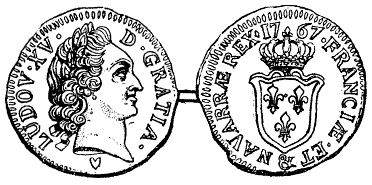Lister wrote in Folios 4-7 of his pocketbook:
From Bourdeaux to Mont-pelier. 27 lv.[1] to
Nismes 6 li [2] to
Avignon. 4 li to
Arles. 1 li to Aix 7 li
Received in all. 770 li
Expended upon the
roade 1369 li
______________
rem. 403
Sept. 27th returned from Bordeaux a bill of 300 lb which I had payed me at Montpelier upon my return out of Provence[3]
December the 22 a bill 150 lb returned me from Bourdeaux by Camby.
August 14 \1665/ a bill of 122 £ returned me from Bourdeaux by Kerby.
August 11th 1663 When I left England I returned to Burwell 84 crownes.[4] I had left in my pocket
returned me from England a bill of 40 Cr. and soon after an other of 50 both which I received by bill of Exch. at Montpellier.
Montpellier. February 30 received by bill of Ex from Bourdeaux. 50 lv.
whereof it cost me when I was upon the roade from B to Bordeaux 90 lv.
[1] Livre. In unit terms, the livre corresponds to the English pound sterling, the l.s.d. of pre-decimal UK currency representing the livre-sou-denier equation, which had 12 deniers to the sou, and 20 sous to the livre.
[2] Thoughout, Lister indicates a £ by li. A crossed li was later formalized into the pound sign.
[3] Lister is describing a bill of exchange. According to the OED, A written order by the writer or ‘drawer’ to the ‘drawee’ (the person to whom it is addressed) to pay a certain sum on a given date to the ‘drawer’ or to a third person named in the bill, known as the ‘payee’. A true bill of exchange is given in consideration of value received (and this is usually stated upon the bill), but a bill is sometimes drawn, not against value received, but merely as a means of raising money on credit, and is then known as an accommodation bill.
[4] A crown was worth five shillings. Lister brought back £21 to Burwell after his travels. The crown was also equal to a French êcu or French crown.
[6] The Jacobus is an English gold coin of the reign of James I, with 25 shillings (a pound and five shillings).

French sol or sou, Reign of Louis XV, Wikipedia
